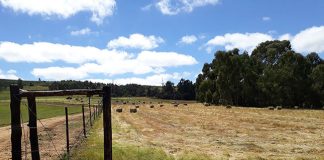
This year, with Safex prices remaining low, the decision to plant maize is a difficult one. July 2015 white and yellow maize contracts are currently trading at R1 913/t and R1 908/t respectively. The US futures price for July 15 deliveries is slightly up from current levels. Cumulative South African maize exports of 1,28 million tons for the current marketing year ending 12 September were slightly less than for the same period a year ago.
READ:Medicinal cannabis soon to be legalised
Assuming ‘normal’ weather and an average crop, prices will remain at the current levels, at least until the end of the planting season. If the Safex prices for July next year are not enough to cover full production cost, farmers are encouraged not to plant maize, or to plant less, so that prices can increase. Unfortunately, this well-intentioned advice often ignores important financial aspects. Farmers who plant less are often worse off than their neighbours, who went ahead and planted the same or more than the previous year.
That this is so should become clearer if we consider one of the comprehensive enterprise budgets published on Grain SA’s website. According to the latest budgets for the western production area, total maize production cost varies between R2 810/t at a yield of 2,5t/ha and R1 730/t at a yield of 5t/ha.The current Safex July price of R1 900/t is probably equal to a farm price of R1 600/t. At this price, even a producer with a 5t/ha yield will not be able to cover full production cost.
Total cost or variable cost
The rational long-term decision will be to halt maize production. However, not planting does not mean that fixed costs disappear, and this is something that many farmers have found out the hard way. If a farmer can generate an income larger than the variable cost of planting, then the rational decision this year is to plant.
According to the Grain SA budget mentioned, the farmer with a 2,5t/ha yield will spend R1 901/t on seed, fertiliser and other variable inputs. A farm price of R1 900 is thus needed, or a Safex price of at least R2 200. Farmers with a yield of 5t/ha will spend R1 276 on variable inputs and need a Safex price of R1 576 to be able to plant maize this season. Using the Grain SA budget for the western area, it seems that farmers with a yield above 3,5t/ha may be able to cover full variable cost this year.
Other options
All the same, the very tight margins this year make planting maize a difficult decision. Credit providers usually insist on both term contracts and yield insurance before providing production loans. Many farmers will be unable to obtain production credit this season. A long-term sustainable farm cannot rely only on grain production, as prices and yields are too uncertain. Adding livestock farming can stabilise total farm income. Farmers should not allow a few good years to lead them astray and concentrate only on grain production.
Transport
Despite explanations by clever people, confess I still do not understand the transport differential. Let us look at an example. A farmer delivers maize to his local co-op’s grain silo. He gets paid Safex price, less transport differential to Randfontein. If a dairy farmer in Randfontein buys this maize, he will have to pay for transport, even though this was already paid for by the producer!
This system seems to be carved in stone, so farmers should not waste time trying to change it. The best bet is to bypass it completely. There are intensive livestock farmers in SA who buy large quantities of maize on a regular basis. Surely it should be possible for a producer to enter into contracts with these farmers, either directly or through a grain trader, and save at least R600/t or more between them?
Adding R300/t to the maize price changes profitability completely.Input cost depends on the price of the inputs as well as the quantity used. Input prices vary greatly and farmers should ensure they pay the best prices for their fertiliser and other inputs.
Fertiliser and fuel are the major cost items, and as prices are generally lower in off-season, farmers can drive hard bargains.
When margins are narrow, technical efficiency is crucial. Although SA grain producers are already highly efficient, it is good to re-evaluate practices annually to ensure continued efficiency. The 2014/2015 season is a difficult one for grain farmers. Farmers who decide not to plant maize should consider the implications very carefully.
Dr Koos Coetzee is an agricultural economist at the MPO. All opinions expressed are his own and do not reflect MPO policy.





